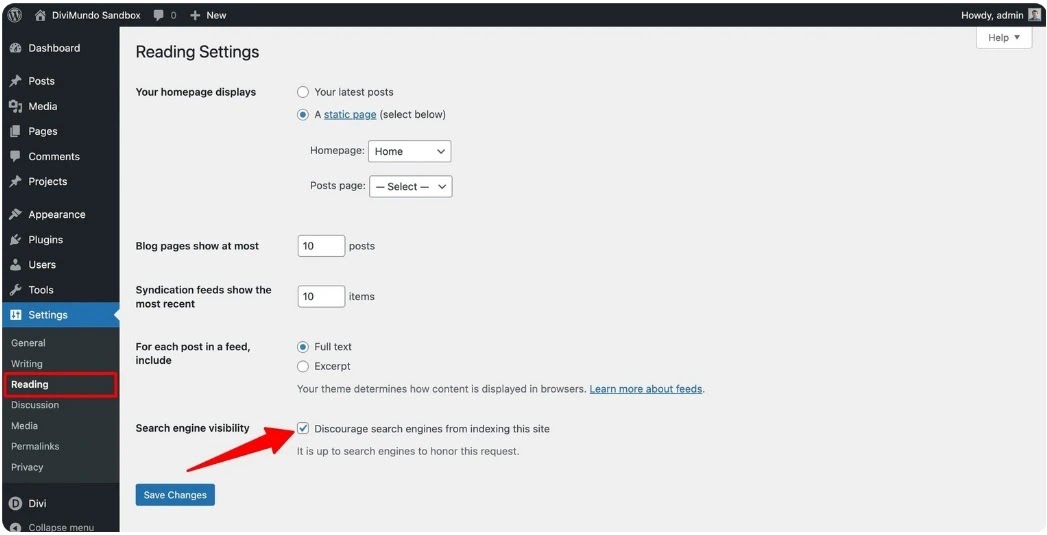4 Ways to Make a WordPress Site Private
Not all WordPress websites are meant to be accessible to the public.
Some website owners limit access or keep a discreet presence, depending on their objectives, content, and intended audience.
So, to make your WordPress site private, you must understand the different methods available and decide the one that best suits your needs.
Let’s examine four methods for keeping your WordPress site private and safeguarding your valuable content and information.
Why Keep WordPress Sites Private?
It can be beneficial to keep a WordPress site private for various reasons. Below are some common explanations for making a WordPress site private:
- Development and Testing: Keeping WordPress sites private during development and testing allows for changes to be made without affecting the live site. It also allows bugs or errors to be fixed before the site is made public.
- Membership or Exclusive Content: Certain websites–like membership sites–provide premium services or engaging content exclusively to registered users. Thus, keeping the site private ensures that non-registered users don’t see this material.
- Intranet or Private Community: WordPress allows you to establish internal intranets or private communities for workers, customers, or specialized groups who don’t necessarily pay you for your content. These sites may include sensitive material or conversations suited for the organization or a limited group.
- Privacy: While some people like to make their social media content public to get Instagram likes, Facebook shares, and X comments even from people they don’t know, others are more private and prefer to share their posts only with their friends.It’s the same with a personal website. Some people may want practically everyone to know about their site, so they hire a good retail or SaaS SEO agency to help them boost their site’s visibility. Others may want their sites to be seen only by a few people or even just by them, so they switch to private mode.
Now, let’s look at how you can make your WordPress site private.
4 Ways to Make a WordPress Site Private
With WordPress, you have multiple options. Follow one or more of these four different ways to hide your site.
1. Hide Website from Search Engines
When you hide a WordPress site from search engines, you prevent Google, Bing, and other crawlers from indexing and, therefore, showing your pages in search results.
To hide your WordPress website from search engines, go to Settings > Reading in your WordPress dashboard. You’ll see the “Search Engine Visibility” choice. Check the box labeled “Discourage search engines from indexing this site”.

Furthermore, you may utilize the robots.txt file to limit search engine access to your website. You can edit this file by connecting to your website using an FTP client or file manager in your WordPress hosting cPanel.
Once connected, navigate to the root directory of your website and add the following lines to the file:

However, including the wrong instructions in this file could negatively impact your website’s SEO. Therefore, newbies are discouraged from using this approach. You can utilize a plugin, which we’ll discuss next.
2. Make the WordPress Site Private Using a Plugin
There are several plugins available for WordPress users to make their site private. Each plugin has its unique features and customization options.
Two popular plugins are “Yoast SEO” and “All in One SEO Pack.” These plugins offer advanced settings that enable you to control how search engines index your site. You can use them to add no-index meta tags to specific pages or posts, preventing search engines from indexing them.
For instance, to use the AIOSEO plugin, go to settings, then click on the “Advanced” tab. You will see the “Robots Setting” toggle button. Turn off the “use default settings” option. Once you do that, more settings will appear under “Robots meta.”

To exclude the page from Google search results, check the box that says “No Index.” After selecting that option, you can save or publish your page.

The All-In-One SEO plugin will insert a line of code that tells search engines not to index the page.
To review if a website is private, try accessing it on a different browser or device. If you can still access the site, review the plugin settings and ensure the privacy options are set up correctly.
Another option is to use Google Analytics 4. With the shift to GA4, Google has made insights such as who is accessing a site (if any) and from where even more accessible. You can make adjustments to your plugin settings again if you see the site can still be accessed.
We recommend researching and comparing different plugins to find the one that best suits your privacy requirements.
3. Ensure Site Privacy through WordPress without a Plugin
You can make your website private manually without a plugin. This manual method requires specialized programming or an expert.
Use the custom code below to make your WordPress website private.

First, copy the code, then go to Appearance->Theme Editor. Then click Themes Function and open function.php. Finally, paste the code sample and click Update File to save.

Visitors to your website will be redirected to the login page. And only users who login can view your website.
4. Implement Privacy Settings for Content
WordPress privacy settings can also control who can access a specific piece of content on your site. You can make it public, password-protected, or limit it to specific users.
The following section provides a detailed explanation of this.
How to Create Private Pages and Posts on WordPress
If you want to share content with a limited number of people, creating pages and posts that are private on WordPress is a great way to do it.
To create a single post that’s private on WordPress, first go to the post editor. Then, find the “Visibility” option in the document settings. Click on it and select “Private” to limit access to specific users or yourself.
You can refer to the screenshot below:

The process for creating a private page on WordPress is identical. Use the screenshot below as a guide.

Note that only logged-in users with an editor user role on your website can view private posts or pages. Other users who attempt to access the same page will receive the “Page Not Found” message:

However, if you create a password-protected post or page, it becomes accessible to anyone who knows the password. When users visit the page URL, they will find a message like the one below. Filling out the field with the correct password is necessary to access the page:

To make a post-password-protected, just choose the ‘Password Protected’ option and create a strong password.

Now you know how to create private pages and posts on your WordPress website. Use this strategy to ensure that only authorized users access your specific content.
Frequently Asked Questions (FAQs)
| What does it mean to make a WordPress site private? |
|---|
| Making a WordPress site private means restricting access to its content, so only authorized users can view it. This can involve preventing search engines from indexing the site, password-protecting the entire site, or restricting access to specific pages or posts. |
| Why would I want to make my WordPress site private? |
| Making your WordPress site private may secure sensitive data, restrict access to a select audience, or prevent search engines from crawling incomplete or confidential content. |
| Will making my WordPress site private affect its search engine ranking? |
| Yes, making your WordPress site private can impact its search engine ranking because search engines won’t index private content.
However, if you’re concerned about SEO, you can use plugins like Yoast SEO or All in One SEO Pack to control indexing on a page-by-page basis. You can partner with a SaaS SEO agency that can help you optimize the pages you want indexed for maximum online visibility while keeping the rest private. |
| Is there a way to make my WordPress site private but still allow it to be indexed by search engines? |
| No, making your WordPress site private typically involves preventing search engines from indexing its content. If you want your site to be indexed but still restrict access, you can use password protection or membership plugins to control who can view the content. |
| Can I make specific pages or posts private? |
| Yes, you can make specific pages or posts private on WordPress by adjusting their visibility settings. Edit the page or post, change the visibility to “Private,” and save your changes. |
Conclusion
You might want to make your WordPress site private for several reasons. Maybe you just want to maintain privacy, safeguard sensitive information, or manage access to exclusive content.
Whatever the reason, site owners like you have various options to control access to their WordPress site. You learned those options with this ultimate guide.
Just adjust your settings, use plugins, or customize your content visibility. Now go ahead and achieve that desired level of restriction for your site or page.





